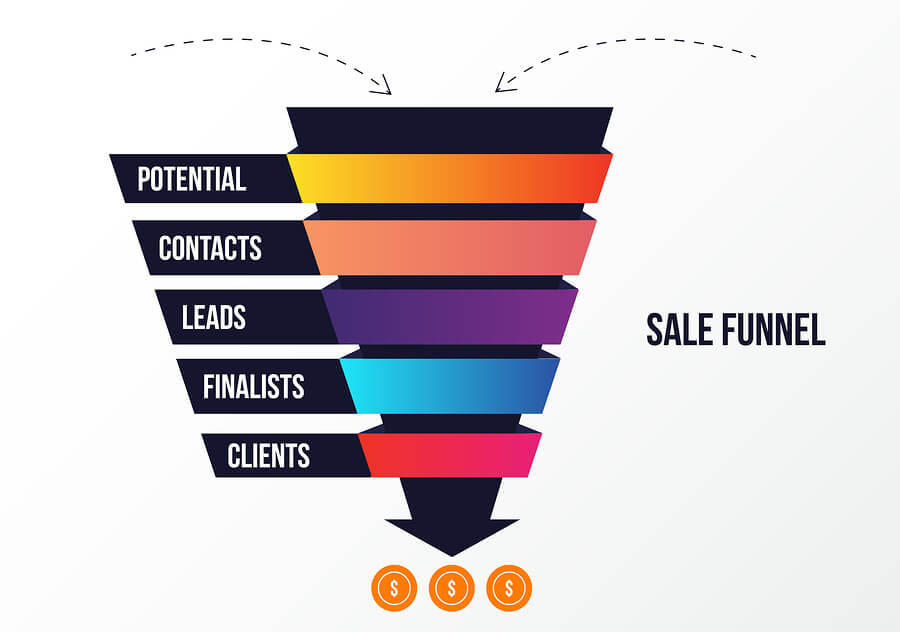
How to Create an Online Marketing Plan that Works (And Why You Should)
Brands often think that if they have a killer product, all they need is a few lines of website copy to attract and convert leads.
But as you may have seen, sales don’t always work like this.
Thanks to today’s crowded markets and the constant stream of noise competing for your buyers’ attention, it’s never been more challenging to make your brand stand out.
So what’s the secret sauce to driving leads and converting customers in the digital age? Learn how to create an online marketing plan that accomplishes both goals, without wasting your time or money.
The eight-step action plan in this guide has everything you need to succeed. You’ll discover how to set up a solid marketing plan that gets your brand on your target audience’s radar and convinces them to buy.
But before getting to that, it’s important to first address:
Why an Online Marketing Plan Is so Valuable
If you’re wondering whether creating an online marketing plan is really worth your time and effort, consider these recent statistics [* = link to source]:
- 80% of people prefer to learn about a company through custom content [*].
- Content marketing generates 3x as many leads as traditional marketing for every dollar spent [*].
- Running content marketing campaigns costs 62% less than traditional marketing [*].
- 96% of marketers find content marketing to be effective for their companies [*].
So yes, spending the extra time planning and creating an online marketing plan is worth it. You’ll notice this in the form of more website traffic, higher click-through rates, and more conversions.
But if you wing your content marketing game plan, you’ll waste time, money, and valuable resources. Without direction, you’ll keep spinning your wheels and never grow your customer base or sales.
To help you avoid all of that, let’s talk about:
How to Create an Online Marketing Plan that Attracts Customers and Leads to Conversions
Follow these eight steps, and you’ll have a solid marketing plan ready to go:
Step 1: Define Your Brand’s Unique Value Proposition (UVP)
The first step in crafting a digital marketing strategy is figuring out your unique value proposition (UVP).
Now, you’ve probably heard of a unique selling proposition (USP), and a UVP is similar. However, while a USP focuses on your sales positioning, your UVP is about the value you bring to customers.
Think of it this way: Your product boasts a faster processor than your competitor’s (a USP). But your customers probably care less about the technical specs and more about what they can accomplish with that extra power (a UVP).
So even though these two are connected, it’s your job to highlight your USP and explain why customers should care about it. In reality, your customers only want to know what your brand can do for them (i.e., the value you bring). That’s why the first step in your marketing plan is to determine your UVP.
To do this, focus on the one-of-a-kind differentiators that set your brand apart from others on the market. Ask yourself and your team:
- What does your product/service bring to the table?
- What’s so unique about what you have to offer?
- Why would someone choose your brand over your competitors?
Crucial elements of your UVP include your company’s mission, values, manufacturing practices, and how you give back. Customers look for these key ingredients when deciding between brands.
After you figure these out, you must convey your UVP(s) clearly.
Potential customers and website visitors must be able to identify your UVP within the first five seconds of seeing your homepage, ads, or social media posts.
Learning this information, plus what you uncover next, will help you build a targeted content marketing plan that resonates with your audience (and, just as importantly, converts them).
Step 2: Define Your Target Customer(s)
Your next goal is to think about the customers who may benefit the most from your product or service. These are your target customers.
It’s not uncommon for businesses to make the mistake of assuming everyone is a target customer. With this mindset, brands market to everyone yet connect with no one.
Online marketing is all about creating highly personalized content for your target audience. These messages should resonate with your buyer’s needs and the problems they’re looking to solve. What works well with one group of buyers may not address the needs of a different group, so it’s your job to uncover and hone in on the different types of target customers that your business services.
To define your target audience, think about your top customers. These customers love everything you have to offer, engage with all your content, and make repeat purchases. They understand the value that your company brings to their lives.
Check your customer data to dive into this group and discover specific attributes you can use to build your buyer personas, or target customer profiles. Once you know these traits, it will be easier for you to connect with customers through content marketing.
Are they moms? Business executives? What do they do for a living? Where do they live? What interests or goals do they share? Why do they choose your brand over others?
Asking questions like these will help you define what your brand’s target customer actually looks like. Using concrete details and answers from people who have proven to be successful for your business will help you attract more customers just like them.
It also helps to give these personas real names so you can imagine exactly who you’re speaking to when it comes time to write your messages.
What if you have multiple buyer personas? That’s totally okay! You’ll just need to build out a few more target personas based on these top customers.
Spend some time building out your personas before moving onto the next step. Doing so will help you optimize your marketing efforts, leading to an increase in customers and conversions in less time.
Step 3: Set Realistic Goals in Three Categories with Deadlines
The next step in your digital marketing strategy plan is to come up with realistic goals.
It’s a given that your business wants to increase its customer base and sales. But these goals aren’t specific enough to help your team make any real progress. A better approach is to get super-specific about what you hope to achieve in a predetermined time frame.
For example, is your business trying to break one million dollars in revenue this year? Do you want to surpass 100k customers this quarter? Are you trying to sell 10,000 units this month? These are the types of specific goals your team needs to brainstorm. They all mention a target figure to reach in a set time rather than a blanketed goal of more customers and revenue whenever possible.
Gather your team to discuss the specific goals you want to achieve. These goals will help you stay on track and avoid distractions. If a project or task won’t help you get closer to reaching these goals, you can table it for the next quarter.
Need a few goals to consider here? Think about improving:
- Leads and sales tracked.
- Time spent on your website.
- Number of website pages viewed.
- Your conversion rate.
- Percentage of leads that are of a high quality.
- Activity on your website (e.g., whether website visitors entered their email in your subscription box, downloaded free content, shared content, etc.).
Before you set a goal in stone, it’s vital to take a current baseline to see whether the goal is realistic to achieve. If you’ve never sold more than 5,000 units in a single quarter, it may be fruitless (and stressful!) to push your team to sell 50,000 units in the same time frame.
So consult with your team to develop specific goals for your business, marketing efforts, and the tasks you plan to tackle in the next month/quarter/year. Then, once you have your goals laid out, you can:
Step 4: Decide Where You’ll Market Your Business
With your goals in mind, your next step is to think about where it’s best to market your business. Before you jump to a decision, though, it’s important to think outside of what you’re currently doing. You want to be where your customers are most likely to engage with your content.
So while you may be running social media or pay-per-click (PPC) ads, take a step back and think about whether this is really the best use of your time and money. Don’t limit your brand’s potential for growth by getting stuck in the same rut.
Lead generation can happen in so many different places, such as:
- Search engine results for your website.
- Blog posts on your website.
- Social media channels.
- Paid advertisements.
- Your company’s email list.
- Influencer and affiliate strategies.
To figure out what works best for your target audience, dive back into your customer data. Customer interviewers, Google Analytics data, and the buyer personas you uncovered in the first step should give you an indication of where your customers actually hang out online, not where you think they might be. Did these customers find your brand organically through a web search? Or did they engage after an email or social media post caught their attention?
Use the top two or three avenues you discover as starting points. Focus your initial marketing efforts there, and then branch out once these start performing well. This information will also help you build out an effective action plan and sales funnel.
Step 5: Create an Action Plan for Reaching Your Goals
By now, you should’ve identified your target customer, set goals to focus on, and gotten a better idea of where to market your business. This means you’re finally ready to build out your digital marketing action plan.
This is essentially how you plan to reach your goals. This roadmap will also give your team the direction they need to make measurable progress.
Write down everything your team can do to inch closer to your goals. Break down each initiative into smaller tasks you can hand off to your team. Then, prioritize the ones that will move the needle most, and tackle those first.
If you want to start with PPC ads, for example, you can create tasks such as these:
- Revisit your existing PPC campaign, or start a new one aimed at your buyer personas/revised target audience.
- Update ads and landing page copy to match new personas and goals.
- Review ad data to see what worked and what needs to be improved..
- Review website data to check how landing pages are performing, or create new ones if you haven’t started advertising yet.
The tasks you add to your action plan all depend on your specific goals. And they should also include designing a sales funnel…
Step 6: Design Your Sales Funnel
If you’re not familiar with the term sales funnel, it refers to how you’ll guide leads through the buyer’s journey and eventually towards making a purchase.
Why’s it called a funnel? Think of it from a visual standpoint: A funnel is widest at the top before narrowing at the bottom. So you’ll cast a wide net, engage with leads, and then push them closer down your funnel until they convert.

In the PPC example from step #5, tackling the first part of your sales funnel means creating compelling ads that (hopefully) get clicked on. Once they do, these leads will go directly to a landing page that again urges them to complete the next step. In this case, let’s say that means dropping their email into your newsletter sign-up box.
Now you can send targeted emails that engage leads further. As they learn more about your company or making a purchase, they transition from cold to warm leads and inch ever closer to the bottom of your funnel, where they’re most likely to convert.
To start building out your sales funnel, sit down with your team and map out all the steps you would take if you were the customer.
In reverse-engineering style, you and your team will work backward from making the sale to everything that led up to that point. Your goal? To give customers a seamless, compelling journey from brand awareness to checkout.
Figure out what your customers need in each stage of the buying process to build trust, and then deliver it. Once you do, they’ll be able to complete the next steps without hesitation.
Step 7: Set KPIs to Monitor, Track Your Campaign’s Performance, and Make Adjustments
With your roadmap in hand, you can start setting up your key performance indicators (KPIs). A KPI works like a target for your team to hit. Tracking these will give you a better idea of whether your team’s on track to reach your goals.
A KPI in that same PPC example may include the number of website visitors who clicked through to your landing page or submitted their email address (or both). Again, these all depend on your brand’s specific goals.
Make sure to set your KPIs before you assign tasks to your team. This gives each person individual goals to work toward and focus on. It also helps them measure their progress and understand your expectations.
Don’t forget to set a deadline for each task. Check in either once or twice a week to gauge your team’s progress (and ensure that you’re not falling behind schedule).
As mentioned before on this blog, you never want to take a set-it-and-forget-it approach with your marketing; the setup is only the first step. Monitoring your KPIs and tracking your campaign’s performance will help your team see what adjustments need to be made. Consistent follow-up will enable you to see what’s working and what needs to be tweaked. For example, you may uncover that turning off ads that aren’t performing well actually improves your campaign’s performance.
It’s also smart to compare your KPIs each week/month to see if you’re on target or surpassing what you initially planned to achieve. Then, you’ll have enough data to make informed decisions about what to do next.
Continue to touch base with your team as well. Ask if they have any ideas or theories about how to improve your KPIs, and be sure to test these.
Once your team reaches its goal or deadline, you can move onto the final step of your marketing plan.
Step 8: Review Your Marketing Report, Rinse, and Repeat
After three months or so, you should be able to compile a marketing report outlining your campaign goals, everything you did in your chosen time frame, and the outcome of your team’s efforts.
You can (and should) adjust your goals based on what you learned during this time. A marketing report will help you uncover this data and provide the intel you need to make informed decisions moving forward.
It’s also the best way to see which channels worked most effectively and which can be set aside in the meantime. Then, you can decide how you’ll spend your team’s time and budget during the next three months.
Plus, a marketing report is an ideal way to keep your stakeholders in the loop about what happened this quarter and what you plan to do in the future as a result.
Based on your review of this report, you may decide to repeat the steps all over again for a new campaign. Or you could make adjustments to accommodate a different goal or better reach your existing goal, such as reworking the steps to market holiday promotions or launch a new product/service.
Rinse and repeat, and you’ll create a well-oiled marketing machine that drives customers and converts them all year long.
Final Thoughts on How to Create a Digital Marketing Plan
Were you surprised to see just how much goes into creating an effective marketing plan? While it may seem like extra work, tackling each of these steps will help your brand attract the right customers and convert them into brand ambassadors in no time.
However, learning how to create an online marketing plan is just step one. You’ll need to set realistic, measurable goals for your team. And you must monitor your campaign and check in often to make sure you’re running on real-time data instead of assumptions. This will save you time, money, and resources in the long run.
It will all be worth it when you notice a radical shift in your marketing efforts and higher sales, engagement, and ROI as a result. Your boss will be overjoyed to have you leading the team to more future victories!
Need help coming up with your digital marketing strategy? Take advantage of this free tool to get started today!
Most newsletters suck...
So while we technically have to call this a daily newsletter so people know what it is, it's anything but.
You won't find any 'industry standards' or 'guru best practices' here - only the real stuff that actually moves the needle.






